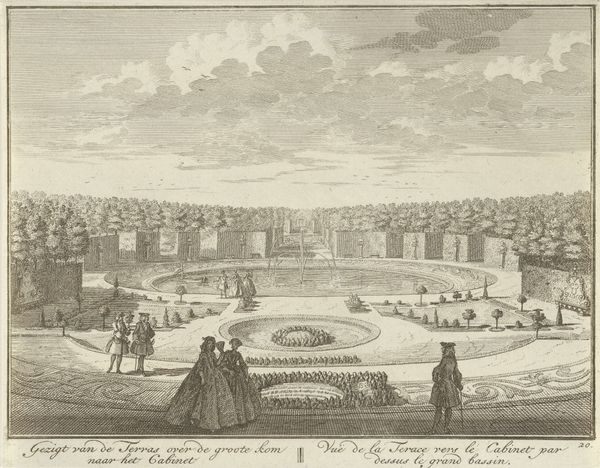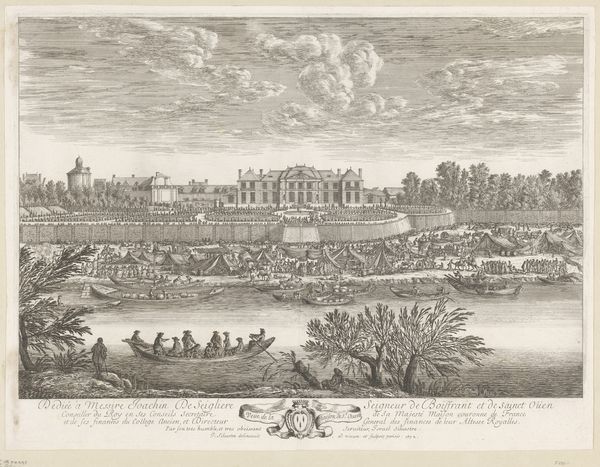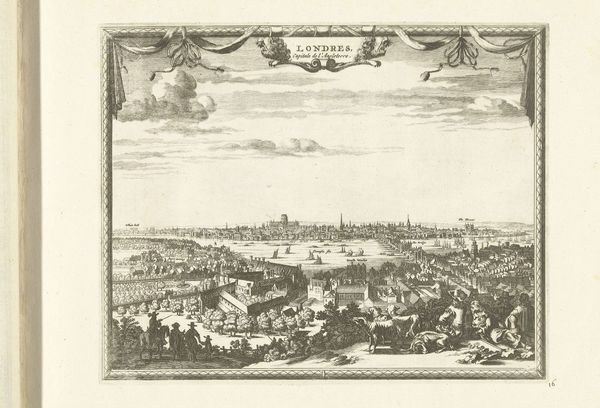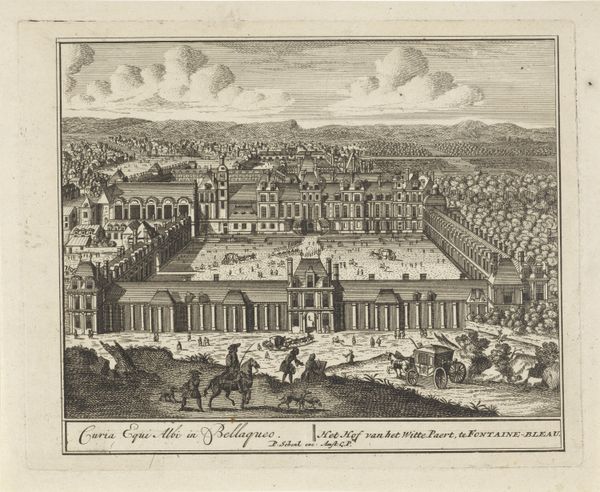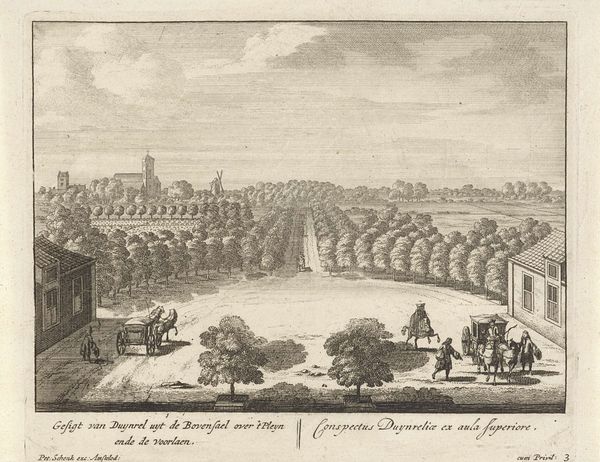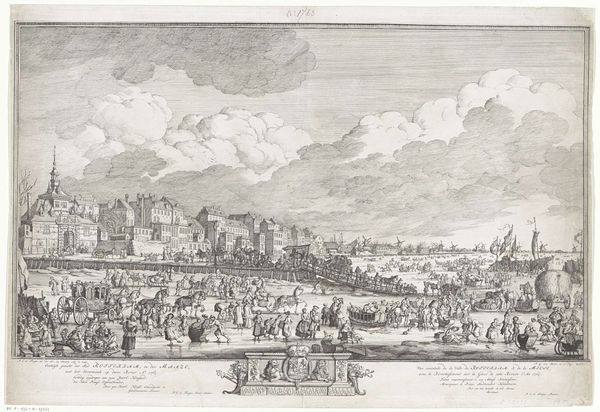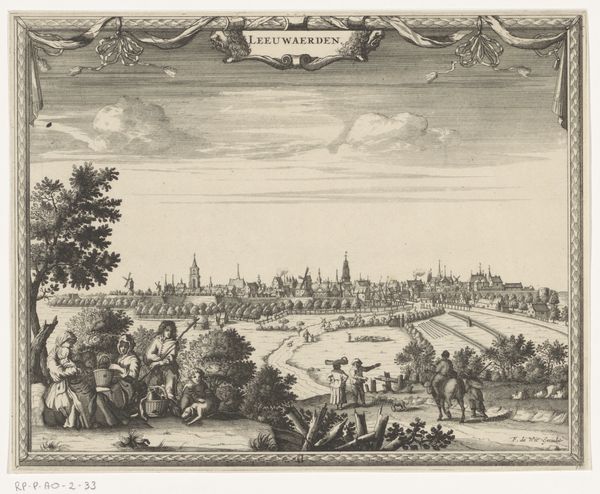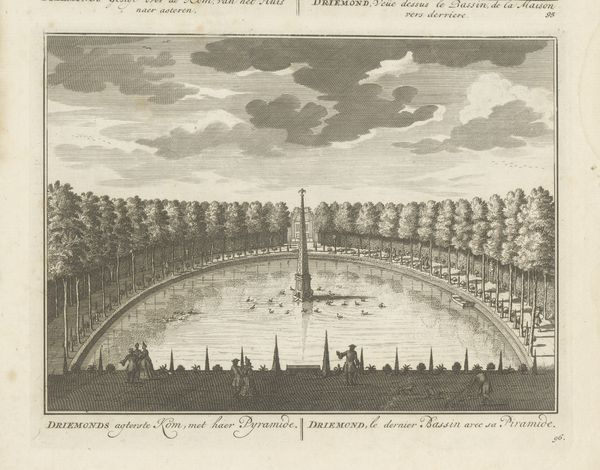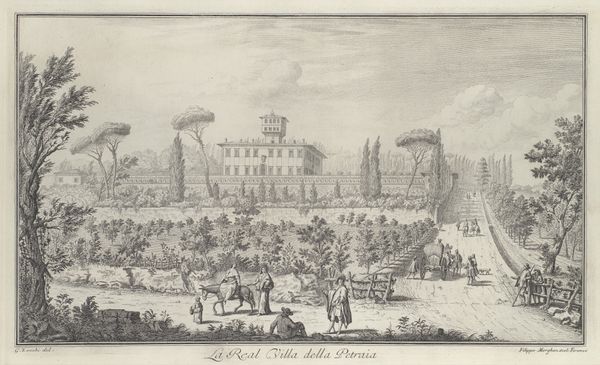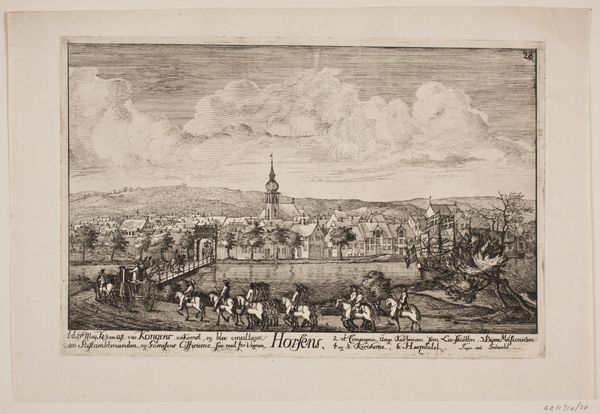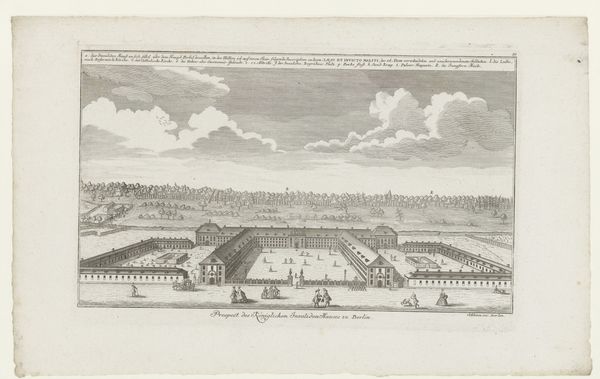
Gezicht op het bassin richting de watergrot in de tuin van Huis ter Meer te Maarssen c. 1740
0:00
0:00
hendrikdeleth
Rijksmuseum
print, etching, engraving
#
baroque
# print
#
etching
#
landscape
#
engraving
Dimensions: height 157 mm, width 199 mm
Copyright: Rijks Museum: Open Domain
Editor: This is "Gezicht op het bassin richting de watergrot in de tuin van Huis ter Meer te Maarssen," a print by Hendrik de Leth from around 1740, made with etching and engraving. The scene feels very formal, very staged, but almost dreamlike. What symbols do you notice here, things that might give us a sense of what this garden was all about? Curator: Indeed, it’s the artificiality of it all that speaks volumes. The very precise geometry of the garden – the balanced pavilions, the clipped hedges, the symmetrical water features…all these serve as symbols of human mastery over nature. Do you notice how the figures are positioned almost like actors on a stage? Editor: Yes! It’s like they’re placed to admire the garden, not to actually *use* it. Curator: Precisely. That speaks to its purpose, doesn’t it? Think about gardens in this era as visual pronouncements. What does this manicured landscape announce about the owner? What psychological comfort might such mastery represent? Editor: That’s interesting! So, this garden wasn't just about aesthetics; it was about projecting power and control? A demonstration of wealth and perhaps intellectual prowess through understanding proportion, perspective and mastery over natural elements? Curator: Exactly. The water grotto itself—a dark, mysterious space—was often seen as a threshold to another world, sometimes connected to classical myths or esoteric knowledge. It created an experience intended to stir the mind as well as the senses. How do you interpret the placement of this threshold as the gardens vanishing point? Editor: I hadn’t considered the water grotto in that symbolic way before. Now it adds so much depth to the overall reading of the work, like the owners were signalling more than just surface-level status. Curator: Ultimately it seems the garden operated as a kind of symbolic microcosm, reflecting the owner's world view. What starts as formal aesthetics ends up reflecting cultural ambition and intellectual depth.
Comments
No comments
Be the first to comment and join the conversation on the ultimate creative platform.

